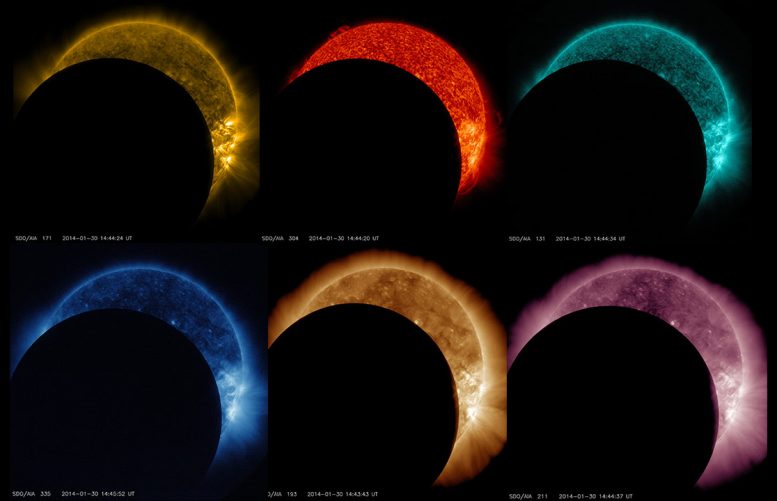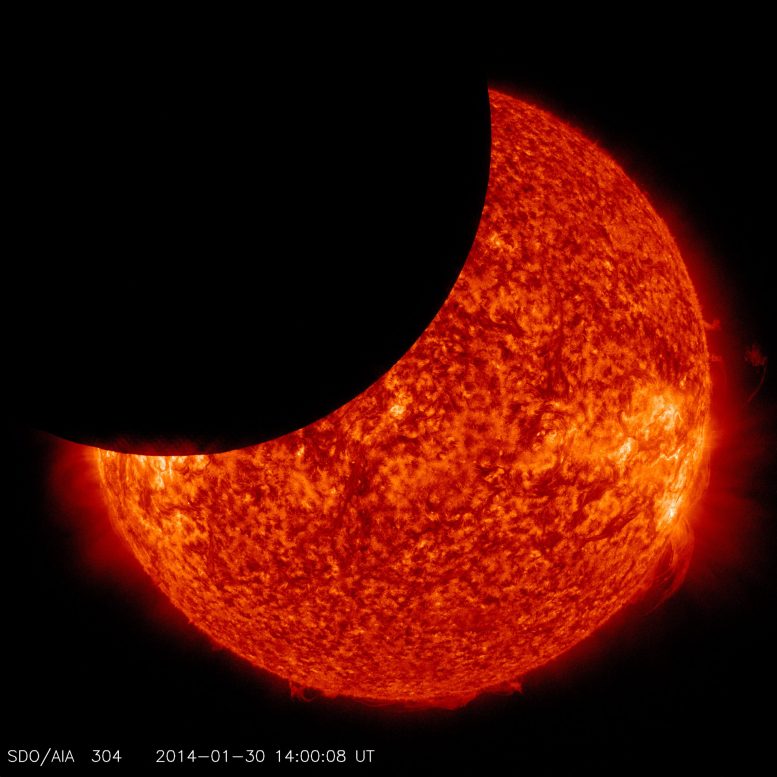
A rainbow of lunar transits as seen by NASA’s Solar Dynamics Observatory. The observatory watches the sun in many different wavelengths of light, which are each colorized in a different color. Credit: NASA/SDO
New images from NASA’s Solar Dynamics Observatory show a partial solar eclipse from space.
On January 30, 2014, beginning at 8:31 a.m. EST, the moon moved between NASA’s Solar Dynamics Observatory, or SDO, and the sun, giving the observatory a view of a partial solar eclipse from space. Such a lunar transit happens two to three times each year. This one lasted two and one-half hours, which is the longest ever recorded. When the next one will occur is as of yet unknown due to planned adjustments in SDO’s orbit.
Note in the picture how crisp the horizon is on the moon, a reflection of the fact that the moon has no atmosphere around it to distort the light from the sun.

NASA’s Solar Dynamics Observatory captured this image of the moon crossing in front of its view of the sun on Jan. 30, 2014, at 9:00 a.m. EST. Credit: NASA/SDO
A movie of the moon crossing in front of the sun as seen by NASA’s Solar Dynamics Observatory on Jan 30, 2014. The sun appears to move because SDO’s fine guidance systems rely on seeing the whole sun to keep the images centered from exposure to exposure. Credit: NASA/SDO/Goddard Space Flight Center
Download high resolution image and video files at: http://svs.gsfc.nasa.gov/vis/a010000/a011400/a011463/









Be the first to comment on "NASA’s Solar Dynamics Observatory Views Lunar Transit"